- FOKION AVGERINOS – DR. IKE: Athletic Director, Youth Mentor, and Healer
- American Hellenic Institute’s Golden Jubilee Celebration
- Leadership 100 Concludes 33rd Annual Conference in Naples, Florida
- Louie Psihoyos latest doc-series shocks the medical community The Oscar–winning director talks to NEO
- Meet Sam Vartholomeos: Greek-American actor
A Time to Weep, a Time to Remember, a Time to Honor: Survivors and their Descendants at the Holocaust Sites
by Asher J. Matathias*
Yom HaShoa (the Holocaust) is so total, devastating, unique in the annals of Jewish martyrdom through the ages, it merits two annual commemorations: a universal observance mandated by the United Nations on January 27, when the Red Army in 1945 entered and liberated the Auschwitz concentration camp; and an Israel-Jewish Diaspora remembrance on April 27. Following this homage to the Six Million dead, including one and a half million children, the floodgates of happiness are opened to celebrate Yom HaAtzmaut, the 66th anniversary of Israel’s independence — the singular event that would have prevented the Holocaust, and acts as a vital, but not sufficient, deterrent for its reoccurrence!
Anna and I joined 20 others from the Holocaust Memorial and Tolerance Center of Nassau County, Glen Cove, NY (where I proudly serve as docent), boarding a packed EL Al flight, ready to join 11,000 arriving Jews from 40 nations (including a contingent of 150 members from the B’nai B’rith Youth Organization (BBYO), descending in Poland for the annual March of the Living; the impeding experience of our lifetime! We were glad to learn the special consideration accorded Charlotte M. Gillman (also connected to the Holocaust Center), and me, as Holocaust survivors, who were given business class accommodation (Anna was especially thrilled).

A million pair of
shoes on display
Inaugurating our mission, without skipping a beat, we went directly to Auschwitz, the largest concentration camp extant, but not the one mainly used for extermination; that ghastly project was performed in nearby Birkenau, where seemingly endless rows attested to the existence of gas chambers and crematoria. One would now have to imagine them, for during a particularly severe winter in 1946, the local Polish population ripped the wooden frames of the structures, used for efficient killing, to be utilized for the comforting heat that results from burning wood. Nearby, in numbered blocks, we viewed black and white photographs taken surreptitiously by commandos documenting the open field burning of corpses, better to hastened the process by the use of benzene; apparently, having individual body cremations was too slow and inefficient.
[sws_blockquote_endquote align=”” cite=”” quotestyle=”style01″] “Greek Jews were instrumental in refusing camp jobs that would compromise their moral principles and their fellows, and, even managed a revolt which blew up one of the blocks. They went to their inevitable deaths, preparing the Greek flag of blue and white colors, extracted from cloth remnants of their prison uniforms, and lustily singing the Greek National Anthem as they marched to their execution.” [/sws_blockquote_endquote]
Of course, as would happen repeatedly, I was moved to tears by the sight of the infamous sign at the entrance of Auschwitz: ARBEIT- MACHT- FREI, labor sets you free; how demonic, how banal is evil, a phrase and conclusion made famous by the writer Hannah Arendt (the author of the controversial narrative of the trial of the mastermind behind the Final Solution, depicting his days in court in her 1961 memoir, Eichmann in Jerusalem). As we were running behind schedule, a more intensive tour was taken during the projected Monday, April 28, march, where more than 11,000 Jews from 40 nations, with dignitaries from Israel, were assembled in the killing fields of our ancestors; among them my maternal grandparents, Daniel and Rachel Atoun, and their young sons, my uncles, Shabetai and Jacob.
In the ensuing days, April 26-May 1, our group easily conflated into a unit, a family whose members traced ancestors who confronted the crucible of the maelstrom that was the Shoa; some perishing, while others, heroically, survived to rebuild their shattered lives — in the revived Jewish State, America (North and South), and a minority, ironically, to return from Displaced Persons camps to Germany (today’s one of three growing Jewish communities, along Israel and USA)!
A visit to the ornate Isaac Altschul Temple lay open the wound, and reality of contemporary Poland; to a remarkable extent without the former glorious Jewish presence, yet, bent on preserving that culture in the official protection accorded Jewish sites, and the longevity and popularity of annual festivals, including Klezmer music, food, recitals, lectures — a society intent on lifting Judaica from the ashes, alas, without Jews!
The concept of segregating Jews in confined spaces, begun in Venice where the word ghetto was coined, has a long pedigree in Poland, where Jews have lived for 1,000 years; in 965 C.E., a Jewish merchant from Spain, Ibrahim ibn Yakub is first to travel to the country. Touring the Podgorze Ghetto’s Wall, we conjured the life of restriction for our coreligionists, even as they were able to maintain a modicum of contact with the outside world, and, thus create occasional personal human bonds. In this manner, we enter century-old The Apteka Pod Orlem, literally the Pharmacy Under the Eagle, where the non-Jew Tadeusz Pankiewicz refused to cede the premises when Jews moved to the Krakow Ghetto. He preferred to optimistically think that one day he will resume his career under normal circumstances; meanwhile, he offered succor, and “dispensed medicines for the residents of the closed quarter.”
Krakow’s Old Town, ancient and medieval, had been at the crossroads of regional commerce, instantly becoming both wealthy and a political center — it served an extensive stint as capital. The cobblestones remind of other European cities, and the impressive Wawel Castle, other intimidating structures. The nearby Galicia Jewish Museum, founded in 2004 in the Jewish district of Kazimierz, accentuates these observations.

Asher walking towards Birkenau extermination camp
With the dawn of a new day, we are off for Plaszow, a notorious camp providing slave Arbeitslager, labor, for several armament factories and a stone quarry. It was under the command of the sadistic Amon Goeth, the ruthless character played by Ralph Fiennes in the film Schindler’s List. We depart for a more extensive visit to Oswiecim, Polish for Auschwitz, its Jewish Center, and more detailed overview of the nearby extermination outlet of Birkenau.
We visit Oskar Schindler’s factory, the site created by an enterprising businessman, a German and Nazi Party member, with valuable contacts in the German military. He managed to create a faux manufacturing establishment, employing hundred of Jews as laborers exempt from immediate liquidation, who, in time, would have their lives spared! His efforts, sometimes tarnished by some testimonies of his arbitrary, intimidating, and threatening qualities, a likable rogue, who nevertheless achieved the noble goal of saving many Jews; his example was both immortalized in Steven Spielberg’s masterpiece, the aforementioned Schindler’s List, and honored as Righteous Among the Nations by the premier Yad Vashem Holocaust Museum in Jerusalem.

Asher orating upon the loss of Greek Jews
The preceded was a prelude, along with the previous night’s concert featuring Dudu Fisher at the Krakow Opera House, to the awesome March, the raison d’être for having traveled an enormous distance to commune with the ghosts of the innocent and pure of spirit now around us, soon to begin by the assembled throng, all descending on the killing fields of yesteryear; together, and in solidarity, to weep, remember, and honor the casualties of war and inhumanity! Alternately, showering the tears of heaven, then bringing forth a brilliant sun, we were met with crosscurrents of world Jewry, a sight to revel in, committed and proud to be involved in the event that will surely transform them, as it has surely done to us!
We embraced the participants, exchanged impressions and histories, vowing to both remember and never forget, commandments — the first more compelling in the scheme of priority – according the one of the main speakers, Rabbi Israel Meir Lau, himself a Polish survivor, and former Ashkenazi Chief Rabbi of Israel, and has attended all 28 March of the Living events. We prepare messages on wooden squares, including remembered victims of our family, son-in-law Bradley E. Herman’s mishpacha, along with those of Edith Edry-Pollack’s, and Binnie Stein’s, placing communication along a memorial candle.

Leonardo Frakas with Anna Matathias
and Charlotte Gilman
Once more, as Holocaust survivors, Charlotte M. Gillman, 81, and I, 70, were seated in a reserved honored place close to the stage, as the recitation of a portion of names from the 1.5 million children who perished was read, along with a part of the list of Hungarian victims whose 70th anniversary of their roundup was commemorated. For the solemn occasion, President Janos Ader of Hungary, donning a yarmulke, gave a most stirring address of commitment to combat anti-Semitism, and all manner of hatred, touring the crematoria and gas chambers of Birkenau at the ceremony’s conclusion.
Greg Masel, Director-General, Keren Hayesod-UIA, was the program’s narrator, moving it along with meaningful pregnant pauses; Neshama Carlbach and Josh Nelson, were the new age troubadours providing introductory music; the singing of Es Brent, a stirring composition of resistance by Mordechai Gebirtig, offered to Jews as a way to overcome their desperate existence amid anti-Semitic violence, adopting it as an anthem, even as the author was murdered in 1942.
A video depicted the plight of Hungarian Jewry during the Holocaust, when the country became an ally of Nazi Germany. The song, What Will Become of the Memories, written by a child of Holocaust survivors, clearly poses the conundrum if who will remember to tell the stories of the victims when the protagonists are no longer able to? The short, heroic, and violent end of Hannah Senesh, voluntarily returning from the relative safety of Jewish Palestine to do intelligence work behind enemy lines — only to be caught, and executed at 23 — was yet another affective video. Her song, Eli Eli, composed after a walk in Caesarea, was performed amid misty eyes.

Entrance to Auschwitz concentration camp
Another song, Szol a Kakas Mar, The Rooster Crows, by the Rabbi of Kalev, expresses the yearning for the redemption of the Jewish People, and was uttered by Hungarian inmates on their way to their final journey in Auschwitz-Birkenau. The Swedish diplomat Raul Wallenberg managed to save up to 100,000 Hungarian Jews, more than any single individual in the war. He disappeared behind Soviet lines, and was never heard from again. His grandniece was present to light one of six urns to memory of the Six Million.
With the theme from Schindler’s List, composed by John Williams, and played in honor of the Righteous Among the Nations by violinist Vladimir Reider and pianists Tomer Adaddi and Chanan Elias, six torches were lit, with remarks made by each presenter: among them, by chief sponsor of today’s event, the philanthropist Leonardo Farkas, himself of Hungarian-Jewish stock; Rabbi Dr. Elie Abadie of the Edmond J. Safra Synagogue, NYC, who movingly spoke of the 200,00 Sephardic victims, including the little known Jewish victims of Morocco, Tunisia, the Iraqi pogrom against Jews known as the Farhoud in 1941, and most compellingly, the fate of Greek and Balkan Jews! Rising to lead the loud applause, we soon hugged and kissed, visibly demonstrating the deep appreciation for this historic moment; concluding with the representative from the State of Israel, where our People were reborn after the Shoa!
The mourner’s prayer, El Malei Rachamim, was intoned by Chazan Shimon Farkas, who also accompanied six survivors reciting the Kaddish; then, on a happy note, a Sefer Torah was produced six letters short of it being completed, were added and done on stage, and is now set to be included on future Marches from Auschwitz to Birkenau. There remained one more activity for all of us to perform as we rose in our places to sing with gusto Hatikvah, the National Anthem of Israel!

Rabbi Dr. Elie Abadie lighting the torch in memory of Six Million
With a song in our heart, we are now ready to plunge to the depths of despair, a virtual rollercoaster of extremes, as we head for Majdanek, located near Lublin’s city limits (to instruct the local people the harsh reaction waiting for them were they to aid the prisoners), the ultimate in systematic mass death machine, before the long drive to Warsaw, the nation’s capital, rebuilt as a modern city, rising from the ashes sustained in the massive German bombardment and occupation in World War II. It is here that we witness up close the actual gas chambers after arrivals has a chance for actual warm showers — the better to soften the skin pores for the maximum effectiveness of the Zyclone B that would end their living misery — concluding with a look at the crematoria shafts that would convert bodies to ashes. A million shoes on display, hair, eyeglasses, and suitcases, to prepare the condemned for the ultimate trip to nowhere. As to the distillation human fat and conversion into soap, it never happened for it was not useful, and time consuming.
Late in the day, we arrived at Warsaw’s Radisson, our last residence prior to departing Poland less than 48 hours later. In the morn, there was visit to Treblinka, located in luscious verdant surroundings, far from population centers, precisely to leave maximum for the exterminators to employ their demonic imagination and devices toward their captives. The massacre of a million, including 800,000 Jews, but not only, the ashes of 80,000 seen enclosed in an open grave. Here, entire villages are represented in inscribed stone monuments, as are the Greek Jews.

Dahlia, a Greek-Jew, of Israel’s police with Prof. Asher J. Matathias
Greek Jews, conversant in Ladino, initially were suspected as being planted spies by the majority Ashkenazim and Yiddish-speaking. Nevertheless, they were instrumental in refusing camp jobs that would compromise their moral principles and their fellows, and, even managed a revolt which blew up one of the blocks. They went to their inevitable deaths, preparing the Greek flag of blue and white colors extracted from cloth remnants of their prison uniforms, and lustily singing the Greek National Anthem as they marched to their execution. Asked to narrate their tragic and inspiring story, which included the decimation of a once thriving Thessaloniki majority-Jewish cosmopolitan town, I choked at several points, as I continued to lead, as in other instances, in the recitation of the haunting mourner’s Kaddish; never mentioning death, but praising the Almighty’s hallowed name, urging our People’s salvation through His anointed Messiah, and ultimate peace for Israel and the world.
In the capital we shared the uplifting saga of the Warsaw Ghetto uprising, home to nearly half a million people, and now an impressive monument to the heroes of that historic chapter of the resistance. We walked a few yards to Umschlagplatz, and nearby Mila 18, enhancing its fame via the eponymous bestseller by Leon Uris.
And so, we inevitably come to realize that our lives hang by a thread, to be altered by forces beyond our ken, by forces beyond our immediate control. The case of Pan Doktor, Mr. Doctor Janos Korczak is instructive. Trained as pediatrician, he became an ardent advocate for children, with a woman collaborating operating a Warsaw Jewish orphanage a century ago. At its height, it held 100 youths from three to 18 years of age; today, we learned from one of two head office employees, it takes care of thirty, coming mainly from dysfunctional homes. They receive basic general education, while being prepared for technical and commercial jobs. Our hero, having refused to abandon his charges, was sent to Treblinka where he died in 1942.
So live, in the words of Leonardo Farkas, to the fullest as if every day is a blessing, for it is! We return to our routines resolute to be less petty and more forgiving; more happy and less morose – the members of our group were taken by my multilingual singing – tolerant, and understanding, compassionate, and even more loving. Anna and I were able to overcome initial trepidation that we were visiting a country which claimed three million Jews in the Holocaust (another 3.5 million Christian Poles); yet, we found a receptive population, opened to our presence, even if the country is essentially Juderein, without Jews.
Asher J. Matathias is assistant professor of political science at St. John’s University, Queens, NY; long-tenured president of the Five Towns Lodge of B’nai B’rith; a frequent and popular public speaker, and a published commentator.

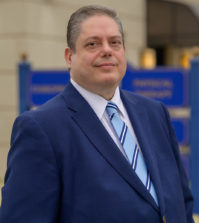
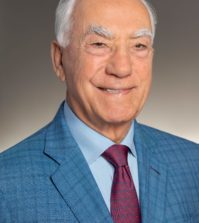
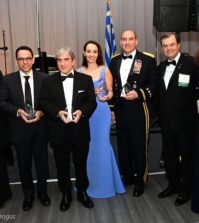
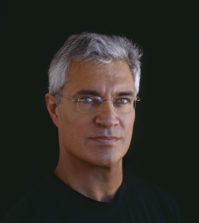







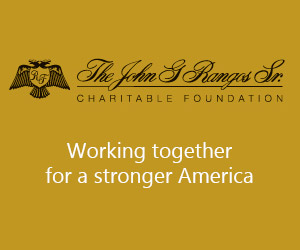


0 comments